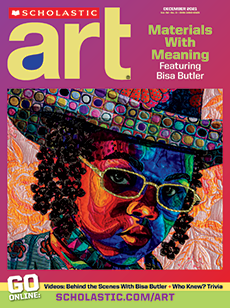Since their debut in 1995, Takashi Murakami’s flowers have adorned fine art as well as stuffed animals, T-shirts, skateboards, jewelry, coffee mugs, and more. The grinning flower is a signature motif, or recurring element, in Murakami’s work. Within this repetition, though, is tremendous variation. For the artist, variation is “an amazing survival technique that helps you avoid slumps.”
Takashi Murakami first began adding flowers to his work in 1995. They’re on everyday items like T-shirts and mugs, as well as paintings and sculptures. His flowers are a motif, or a design that appears over and over again in his work. But within this repetition, there is a great deal of variation, or difference.
